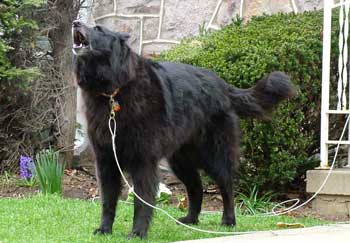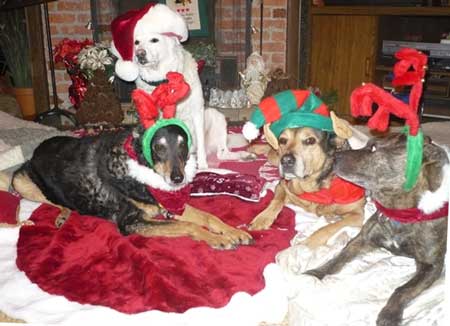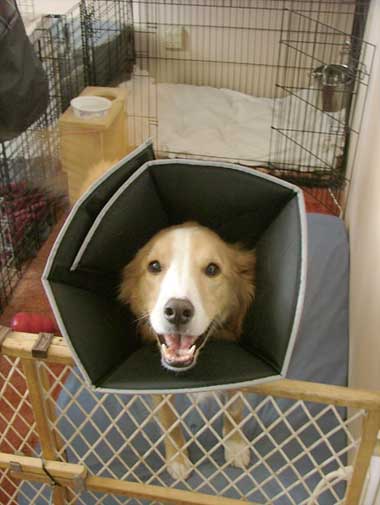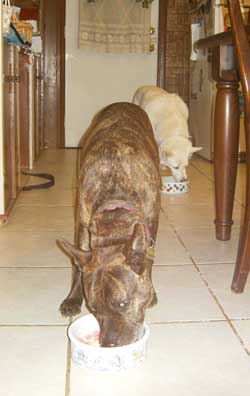Can You Hear Me Now? When group barking is out of control!
Even if you don’t have guarding breeds like I do (mostly), barking can be a problem. When one dog decides there is something to bark about, others typically will follow along, even if simply out of habit. It is up to you to know how to reinvent the habit!
How do you do that? It takes consistency and patience, just like with any other training. Good timing helps too!
It is really important that you do not dismiss all barking done by your dogs because just like human talking, barking is a form of communication. Keeping that line of communication open between you and your dogs is vital. Your dogs need to trust that they can count on you to hear what they are saying, How can you do this while maintaining your hearing ability? Easy, at least most of the time.
Barking happens for a variety of reasons. I will start by addressing alert barking.
You can begin by acknowledging the first bark as an alert to you, the human in charge of taking care of scary things! An alert bark means that your dog is trying to tell you that he saw or heard something that he was not aware of a moment ago. It may or may not be appropriate to bark then, depending on what the situation entails. In any case, you certainly will not typically want the barking to continue once the alert is sounded. But in order to keep your dog’s trust and to ensure that he continues to bark when it is really important to alert, you should learn to properly acknowledge an alert bark.
To do this you can develop a cue word or phrase that you use for just this purpose. It need not make sense to anyone else or even be in English! I learned a great trick from the wonderful trainer, Pam Dennison, several years ago at a seminar she conducted here in my city. Her advice was to go and look in the direction of the bark and while looking back at your dogs, say in a calm and assured voice, “It’s just Uncle Fred”. The first time I did this with my dogs, my dog Kera looked at me like, “We don’t have an Uncle Fred.” But she ceased barking! I have since modified that phrase to another cue phrase. I now use, “It’s just the neighbor, we’re fine,” with much success. That is, when I am consistent enough to remember to do this instead of yelling, which is most of the time, thankfully!
Why not simply yell instead? Well, aside from the fact that yelling usually doesn’t work, yelling is to your dogs the human equivalent of barking. Which pretty much explains why yelling doesn’t work well: your dogs think you are helping them to alert everyone! So choosing the proper response to your dog’s excessive barking can have much better results than choosing to yell.
What other scenarios can result in group barking? The possibilities are endless so I will do my best to summarize some scenarios. Any time you have a group of dogs together, when one barks, the other will likely follow. It’s just a natural response. Your job as the owner and crew leader is to establish an alternate behavior that is a much more rewardable action that barking. What that means is that you will be very consistent about rewarding what you do want your dogs to do instead of barking.
For example, when on a group walk, I have taught my dogs to look at me when they see an animal that they want to bark at (and then chase!). For doing what I want, the dog in question gets handsomely rewarded with a yummy treat. I have done this in steps with a clicker. In some part, I have used Leslie McDevitt’s “Control Unleashed” exercises. www.controlunleashed.net I click when they see the object of attention and because my dogs equate a click with a high value treat, I typically get a quick head turn which results in a treat for the turned head!
 This did not happen overnight. In fact, with Kera and Trent, it still isn’t completely second nature. But with Merlin, who is extremely food motivated, he has been doing the head turn at the sight of a squirrel or a deer for years. Siri has recently joined him in deer head turns and for her, this is a graduation of sorts. She is highly excited at the sight of a deer but because she is also very food motivated as well as competitive, she has (in my mind) decided that it is preferable to get fed when Merlin gets fed rather than afterwards. Kera has some northern breed in her so nature takes over a bit more with her and working on impulse control with Trent is ongoing but they respond to competition as well so we persist in their training.
This did not happen overnight. In fact, with Kera and Trent, it still isn’t completely second nature. But with Merlin, who is extremely food motivated, he has been doing the head turn at the sight of a squirrel or a deer for years. Siri has recently joined him in deer head turns and for her, this is a graduation of sorts. She is highly excited at the sight of a deer but because she is also very food motivated as well as competitive, she has (in my mind) decided that it is preferable to get fed when Merlin gets fed rather than afterwards. Kera has some northern breed in her so nature takes over a bit more with her and working on impulse control with Trent is ongoing but they respond to competition as well so we persist in their training.
Competition is an important training tool with a multiple dog crew if your crew gets along well. If not, you do not want to incite any wars over resources, which is what anything one dog focuses on becomes. If fights over resources are an issue, work on that before worrying about group barking. So be very careful about using competition but do use it with your crew if it is appropriate to do so.
I use competition in many situations. Rewarding a dog who looks at me when wildlife is spotted is just one situation where I use this tactic. How do I use it? By simply being more verbally enthusiastic than I need to be in noticing what dogs looked at me for rewards instead of a squirrel bark alert. I also use this method in my vehicle when we see other dogs. My dogs typically ignore other dogs that we see being walked UNLESS we are in the park where we walk. In that case, a couple of them may bark, most notably Trent, Kera and Siri in order of likeliness.
Trent’s barking is a work in progress and in his case, I do not use competition if he is with us. What works best for him is a whole other blog subject and best addressed by researching the wonderful Grisha Stewart’s work with BAT. ahimsadogtraining.com But with Kera and Siri, I use a NRM (No Reward Marker). My NRM is “Too Bad!” said in a very happy sing song voice. I immediately tell Merlin that he is the best dog ever after telling Siri and Kera individually “Too Bad”. Merlin gets a treat with his verbal reward. This virtually guarantees that the next dog that we see, Siri and Kera are quiet for and everyone gets rewarded. This is a win/win situation for all of us!
Another scenario in which competition can be employed, is when in your crew’s outdoor territory, their yard. If your dogs are prone to excessive barking in this situation as many dogs are, the number one thing that you need to do is supervise, supervise, and supervise more. There is nothing that you can do to remedy this situation if you are remiss in this area. Weather permitting, the easy way to train an alternate behavior to barking is by simply sitting outside with your dogs and using your clicker to mark any time a dog chooses to come to you. Of course, following this with a super yummy treat will be the real reason for choosing the alternate behavior.
Note that I did not mention calling your dogs to you when they bark. If you do this and then click and treat for coming to you, you run the risk of creating what is called a behavior chain. What that means is that your dog barks, you call him, he comes, you click and treat. He associates the bark with the beginning of the behavior chain and necessary to the end result. This is not what you want!
This method is best used at low distraction time frames at first in order to minimize the annoyance to your neighbors. And as always, I would recommend teaching a good recall so that if barking is a typical result of your dogs being outside, you can quickly get them inside in order to avoid citations! In this case, you would reward your dogs once inside, for coming to you, not for barking. Varying the sequence of the rewards can help prevent a behavior chain in this circumstance as well. And again, you can use competition in both of these circumstances if it is appropriate with your crew.
A visitor arriving at your home is a scenario that can cause a lot of barking, especially if you have guarding breeds. I am not going to address that scenario in this blog because it is a subject in of itself, so look for a future blog on that subject.
Vigilance and consistency can go a long way towards eliminating nuisance barking with your crew. Patience helps! Do not get frustrated, but remember, even dog pros yell sometimes! It’s just human nature but so is barking canine nature. If both humans and canines practice impulse control, your life with multiple dogs can be much calmer!
Posted in: Projects
Leave a Comment (4) →






